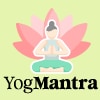I’d started with Yoga several decades ago, but its miraculous effects weren’t obvious to me until recently, which is when I begin to view it seriously — as a totality, rather than just physical poses. I must mention here that Peace did not come from merely ‘doing meditation’; it took its own sweet time, and falling and picking oneself again and again. Faith in the process was rickety in the beginning; it came more by default and running out of options. The end-result, though, was worth it.
THE TRIO: PRANAYAMA-CONSCIOUS RELAXATION-MANTRA YOGA
A combination of three aspects of Yoga is what has stood out for me through my journey of simultaneously combating a life-threatening illness, life’s other vagaries, and various forms of suffering inflicted by Nature including Covid lockdowns. The three aspects, or limbs, of Yoga are Conscious Breathing, Conscious Relaxation and Mantra Yoga.
It must be emphasised that the stage must first be set by regular practice of the physical poses. Doing Asanas with awareness, observing each movement and its effect on body parts – the sensations, the stretch, blood rushing to that area – helps with familiarisation with the body.
Those who can’t perform Asanas can go for loosening exercises or at least walk twice in a day. Physical flexibility and fitness are necessary prerequisites to mastering the non-physical limbs of Yoga.
Pranayama or Conscious Breathing: I recall regular breathing practice led to disappearance of muscle pains and exhaustion and one was able to remain enthusiastic and optimistic, even through the stress and strain of the lockdowns.
To reach here, it is important that a habit of breathing correctly be first established through regular practice of complete Pranayama — ie cleansing through Kapalbhati; full Yogic breathing involving the abdomen, thorax and clavicle; balancing through Anulom-Vilom, the Cooling Pranayamas, and Bhramari for soothing nerves. Once this has been internalised, one can confidently hold the reins of the breath and direct it as one pleases — to relieve pain, to energise body areas, or even push flexibility limits.
For dissipating pain, follow this process: breathe in deeply and let the Prana — life force — flow into the affected area as you focus there. With each exhalation, relax the muscles and distribute or spread the pain, eventually ‘sweeping it out’. This actually works and great Yogis are known to possess the ability to direct life force to diseased areas and, thus, re-establish healing.
Conscious Relaxation: Once practised and mastered, Relaxation helps miraculously to relieve even severe neuropathic pain and induce sleep. Besides, it helps improve efficiency in daily life by leaps and bounds. Practised along with the restraints and observances — Yama and Niyama aspects of Yoga — Relaxation helps one become an observer to oneself. This ‘witness state’, where remaining in the relaxed state becomes second nature, leads to a balanced state of mind. It is also a great ‘conscience-keeper’. Last but not least, Relaxation improves functioning of the heart, lungs and nervous system.
For deep relaxation, collapse the body in lying-down or sitting position and be aware of the inhalation. With each exhalation, let go. Remember to relax not just usual parts but also areas where we tend to hold stress – the jaws, tongue, teeth, gums, roots of teeth, forehead, eyebrows, eyeballs, belly-button, abdominal organs, shoulders, each vertebra in the spine, and the lower back. Let the breath ease out all vestiges of tension;continue breathing in, releasing and relaxing. Slowly, the body becomes light and palpates with universal energy, expanding and then contracting.
Mantra Yoga: At this point, introduce a chant or mantra of your choice. The mantra connects us to a higher energy, is able to control the wandering mind, and its vibrations have a soothing effect on the parasympathetic nervous system that allows us to relax and release tension.
Repeat the chant mentally, coordinating it with breathing. Even better if one can imagine the mantra in embodied form — as a set of letters, a principle, or deity — in the heart region, and let the incoming and outgoing breaths act to gently rock that embodied form. Passively browse over the body as you breathe, relax, and let the mantra spread. You may ‘fall asleep’ in the process.
Over time, the peace this three-limbed practice brings is addictive. It can be practised anytime, anywhere. It works like magic on pain and is a quick-fix for rest and reinvigoration. It is extremely beneficial for harsh body conditions brought on by strong medication, breathlessness, nausea, neuropathic pain, chemotherapy-related sleeplessness and pain, stiffness of muscles, and many other body — and life — issues.
Surrender totally to the process and watch it change your life.
The author is a journalist, cancer survivor and certified yoga teacher. She can be reached at swatikamal@gmail.com.
Read More: YogMantra | How This Trio of Yoga Practices Takes Me From Pain to Peace – News18


